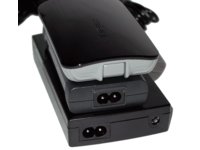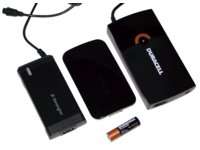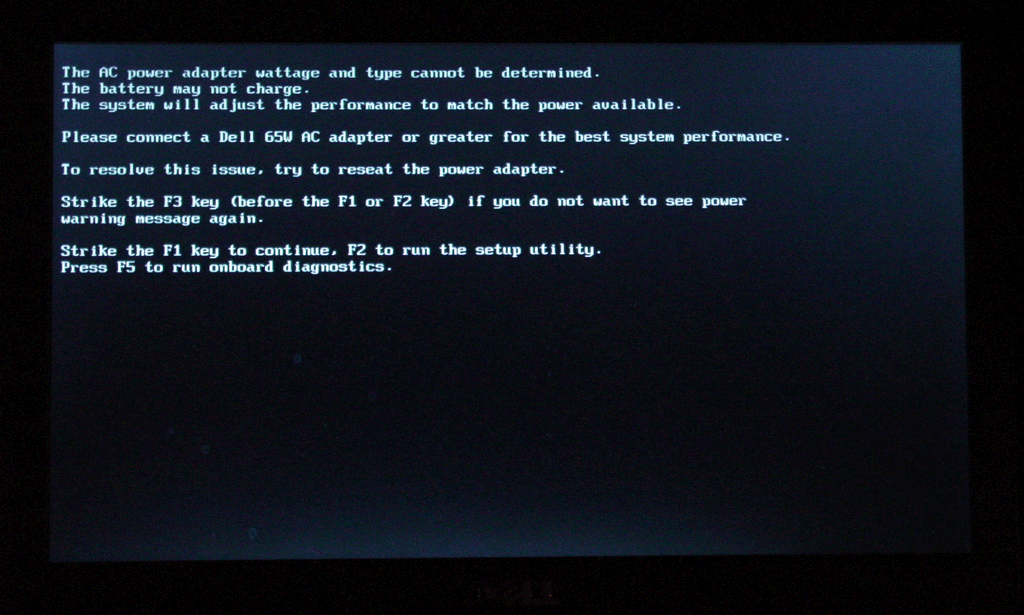Universal Laptop Power Adapters For The Air, Road, And Wall
Which Power Adapter Is Right For You?


We recently took a 2000 mile road trip, and then flew back, allowing us to run a couple of benchmarks in hotels, a Jeep, and up in the air. Even though our test vehicle was limited by its 15 A fuse, that was more than enough current for Duracell’s 175 W Pocket Inverter. We tested the charge time from 0% with wireless networking disabled, using the lowest display brightness setting, and playing back a DivX-based movie.
| Time to 100% ChargeDell Vostro 3300HH:MM:SS | Duracell 90 W | Targus 90 W | Kensington 90 W | Stock 65 W Dell Adapter |
|---|---|---|---|---|
| From AC | - | 2:05:32 | 2:03:55 | 2:05:25 |
| From Car | - | 2:05:55 | 2:03:21(EmPower-to-Cigarette Adapter from Duracell kit) | - |
| From Car using 175 W Duracell Inverter | - | 2:02:57 | 2:05:34 | - |
| Time to Charge from 5% to 10%Dell Vostro 3300HH:MM:SS | Duracell 90 W | Targus 90 W | Kensington 90 W | Stock 65 W Dell Adapter |
|---|---|---|---|---|
| From AC | - | 00:5:00 | 00:04:20 | 00:04:05 |
| From Car | - | 00:05:10 | 00:04:10(EmPower-to-Cigarette Adapter from Duracell kit) | - |
| From Car using 175 W Duracell Inverter | - | 00:05:00 | 00:04:35 | - |
| From Plane using Cigarette Plug | - | 00:05:00 | 00:04:15(EmPower-to-Cigarette Adapter from Duracell kit) | - |
Charging times are a double-edged sword. Ideally, you want a nice slow charge so that your battery lasts more than a few hundred charges. Fast charge times keep you away from the wall socket longer. but, in the long run, they cut down on the battery's health, too. Manufacturers utilize a variety of charging schemes to strike a balance. Usually, the rate of charge starts slowing down somewhere in the 80% to 95% range, which is why the charging time from 0% to 10% is faster than 90% to 100%.
Surprisingly, there is no difference between the three adapters, at least to charge to 100%. The battery in the notebook largely regulates the trickle charge, even when it's topping off from a constant current/constant voltage charging scheme. When you look at the charge from 5-10% (the only test available on the plane, given available time), Targus' Premium Laptop Charger seems to take a more cautious approach for the faster leg of the charge.
Using the Vostro 3300, we couldn't get the Duracell charger to work. It is the only charger of the three we tested that doesn't transmit an identification signal over the center pin. As a result, you can only power a Dell-based notebook; charging is completely disabled. There is no resolution to this problem, which you might experience if you buy your adapter on Ebay for a Dell notebook. Furthermore, you can't use a power inverter in tandem with the stock power adapter, and we're not sure why.
As a result, we had to run an additional benchmark using a 13.3" MacBook Pro to test the charging time of Duracell's charger compared to the other two. We ran it at maximum brightness, wireless enabled, and a custom benchmark for web browsing that mirrors our earlier RLUMark.
| Time to 100% Charge Apple 13.3" 2010 MacBook ProHH:MM:SS | Duracell 90 W | Targus 90 W | Kensington 90 W | Stock 60 W Apple Adapter |
|---|---|---|---|---|
| From AC | 03:00:40 | 02:53:50 | 02:55:40 | 02:55:40 |
Overall, the Duracell product is basically the same flavor of laptop charger as the other two. Aside from its price, the main differences are found in its advantages. Duracell offers a three-year warranty compared to Targus' two years and the one-year coverage from Kensington. With that said, only Targus offers "Free Tips for Life." You simply have to pay for shipping on a tip that doesn't come with the original set ($5 for UPS Ground, plus tax if you live in California).
We wanted to throw in a benchmark from a generic Ebay charger, but the one we bought off some guy in Hong Kong died two days into testing. That goes to show that you get what you pay for; buy generic power equipment and you're putting the purchase and whatever it's connected to at risk. Sounds like reason enough for us to invest in a solid adapter, if we're going to buy anything at all.
Get Tom's Hardware's best news and in-depth reviews, straight to your inbox.
Current page: Which Power Adapter Is Right For You?
Prev Page Compatibility: Will It Work?-
shreeharsha I actually thought they are going to release a standard for all the Laptop Power Adapters, one power adapter for all the notebooks. (only might be different wattages)Reply -
randomstar I can not honestly tell you the number of friends, customers, and others that bought a non-dell power adapter for a dell unit, and found out that it will run the unit, with reduced performance, but will not charge. and paid lots of money. I keep a collection of actual dell power supplies 65w, 90w, 120w ,just to help out when that happens. funny thing , if you shop around you can get the real ones for less than the kingston, etc "universal"!Reply -
JohnnyLucky It's a shame that there is no single International standard to go by. It would make things a lot simpler.Reply -
cadder And even worse than that- between my daughter and I we've owned 3 Dell laptops, and each one uses a different power adapter and plug.Reply -
soccerdocks cadderAnd even worse than that- between my daughter and I we've owned 3 Dell laptops, and each one uses a different power adapter and plug.Reply
That seems unusual. In my house we have 3 different laptops spanning 6 year purchase dates and they all have the exact same plug. Two of the laptops are Latitudes and the other is a Studio XPS. The only difference is that the Studio XPS came with a 130 watt adapter as opposed to 65 watt adapters for the Latitudes. So no gaming with that machine while plugged into the 65 watt adapters. -
legacy7955 shreeharshaI actually thought they are going to release a standard for all the Laptop Power Adapters, one power adapter for all the notebooks. (only might be different wattages)Reply
Actually this sort of standard DOES exist in Europe for smart phones and cell phones, I'm not sure if it includes laptop or netbooks but it might. I'll have to search around.
It seems the bottom line today is buy the OEM adapters if you want to play it safe. -
mayankleoboy1 thats another lame article consecutively.Reply
come on Toms, get the BD benchies out already. -
CaedenV This is exactly why I don't understand dropping serious money into a laptop. Have a good desktop, and a cheap laptop/netbook/smartphone/tablet for your portable needs. Batteries only last 2-4 years with consistent use, so after 2-3 years you need a $150 battery, plus if your power brick is worn out then it is another $120 for that...Reply
So that $800 laptop then requires another $270 to run after 3 years? And this is assuming you don't drop the thing, or break it through normal wear and tear. And laptops do not age as gracefully as desktops because they are generally crap hardware to begin with. Much better to stick with a $300 laptop, and a decent desktop. The desktop will keep up with the times longer and will have less maintenance, while the laptop can be swapped out when need be. -
simontay1984 My Toshiba Satellit Pro M30 is over 5 years old now and it still works fine. HDD and RAM has been upgraded. The battery went flat a long time ago and won't recharge.Reply
Instead of buying a new Lithium-Ion batt (that would only last about another 2 years anyway), I just use a 12V 7.2Ah Lead Acid connected to the PSU input when I don't have access to a mains supply for an extended period (e.g. on long train journey).
It works cos the PSU output voltage is 15V so 12V is close enough.
